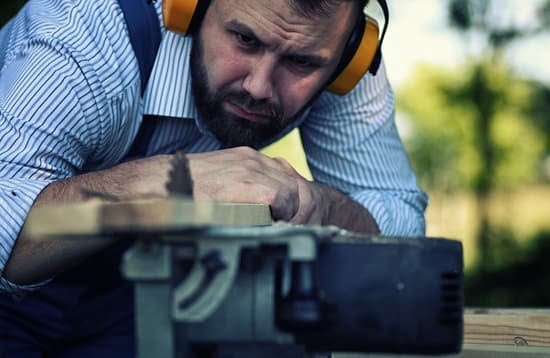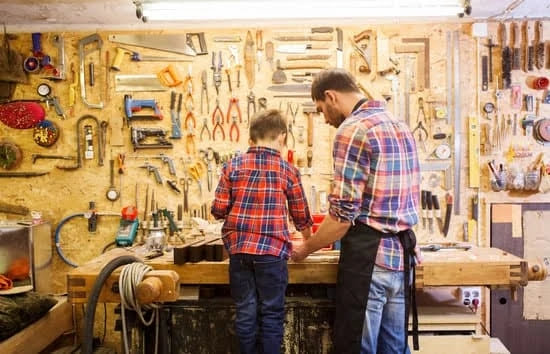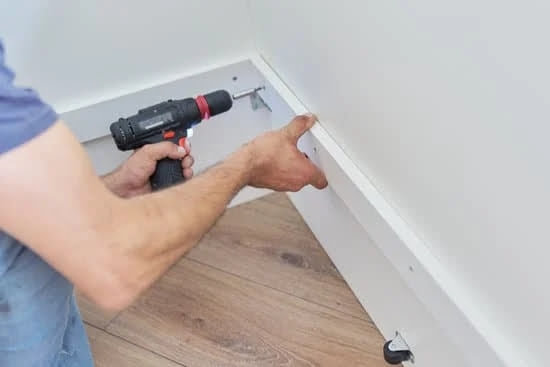Woodworking joints are essential for creating strong and durable structures in woodworking projects. Understanding the different types of woodworking joints and their uses is crucial for any woodworker, whether you are a beginner or a seasoned craftsman. In this comprehensive guide, we will explore the basics of woodworking joints, essential tools for creating them, step-by-step instructions for specific joint types, expert tips, troubleshooting common issues, and more.
When it comes to woodworking joints, there are various options available, each with its unique characteristics and applications. From simple butt joints to complex dovetail and mortise and tenon joints, each type serves a distinct purpose in woodworking projects. By understanding the fundamentals of these joints, you can expand your capabilities as a woodworker and take on more challenging projects with confidence.
In the following sections, we will delve into the specifics of each type of woodworking joint and provide detailed instructions on how to create them effectively. Whether you are looking to strengthen your foundational knowledge or enhance your skills with advanced techniques, this guide aims to equip you with the knowledge and expertise needed to master the art of woodworking joints.
Essential Tools for Creating Woodworking Joints
Woodworking joints are essential for creating strong and durable connections between pieces of wood in various projects. In order to create these joints, it is crucial to have the right tools at your disposal. Here’s a comprehensive guide to the must-have tools for woodworking joints.
One of the most basic tools needed for creating woodworking joints is a good quality chisel. Chisels come in various sizes and shapes, allowing you to accurately carve out the necessary wood to create different types of joints such as mortise and tenon or dovetail joints. A sharp and precise chisel is essential for achieving clean and accurate cuts on wood.
Another indispensable tool for woodworking joints is a high-quality saw. Whether it’s a handsaw or a power saw, having the right saw for the job can make all the difference in creating precise cuts for your joinery. A backsaw, for example, is ideal for cutting precise angles needed for dovetail joints, while a coping saw allows for intricate curved cuts required for certain types of joints.
In addition to chisels and saws, other essential tools include marking and measuring tools such as combination squares, marking gauges, and calipers. These tools are crucial for ensuring accuracy and consistency in the measurements and markings needed to create perfectly fitting woodworking joints. By having these essential tools in your workshop, you’ll be well-equipped to tackle a wide range of woodworking joint projects with confidence.
| Tool | Function |
|---|---|
| Chisel | To accurately carve out wood for different types of joints |
| Saw | To make precise cuts needed for creating various types of joints |
| Marking and Measuring Tools | To ensure accuracy and consistency in measurements and markings for perfect fitting joints. |
Step-by-Step Guide to Creating the Perfect Butt Joint
A butt joint is one of the most basic and commonly used woodworking joints. Despite its simplicity, it can be a versatile and strong option for joining two pieces of wood together. In this section, we will provide detailed instructions on how to create a perfect butt joint and achieve a seamless finish.
Gather Your Materials and Tools
Before creating a butt joint, make sure you have the necessary materials and tools. You will need the wood pieces you want to join, measuring tools such as a square and ruler, marking tools like a pencil or marking knife, wood glue, clamps, and a saw for cutting the wood to size. The type of saw you use will depend on your preference and the thickness of the wood.
Preparing the Wood
Start by measuring and marking the areas where you want to create the joint on both pieces of wood. Use your measuring tools to ensure accuracy. Then, carefully cut the wood according to your markings using a saw. It’s important to make clean and straight cuts to ensure that the joint fits together seamlessly.
Assembling the Joint
Once your pieces are cut to size, apply an even layer of wood glue to one of the mating surfaces. Then, carefully align the two pieces together to form a right angle. Use clamps to hold the joint firmly in place while the glue dries. After allowing sufficient time for the glue to set, remove any excess adhesive using a damp cloth or sandpaper.
By following these step-by-step instructions for creating a butt joint, you can achieve a strong and seamless connection between your wood pieces. When done correctly, this joints are great for simple projects like picture frames or box constructions; though they might not be best suited for load-bearing applications due their weaker connections compared with other more complex joints styles specifically designed for increased strength such as dovetail or mortise joints.
Mastering the Art of Dovetail Joints
Dovetail joints are known for their strength, durability, and aesthetic appeal. They are often used in woodworking projects that require a high level of craftsmanship and precision. The unique interlocking design of dovetail joints provides exceptional holding power, making them ideal for joining the corners of drawers, cabinets, and furniture pieces.
Understanding the Anatomy of Dovetail Joints
Dovetail joints consist of pins and tails that interlock with each other at a right angle. The pins are trapezoidal-shaped projections on one end of the wood piece, while the tails are corresponding recesses on the other end. When these components are fitted together, they create a strong bond that resists pulling or twisting forces.
Techniques for Achieving Precision
Achieving precision in dovetail joints requires careful measurement and meticulous cutting. It is essential to use sharp chisels and saws to create clean and precise cuts for the pins and tails. Additionally, paying attention to the angle and depth of the cuts is crucial for achieving a perfect fit. Some woodworkers prefer to use marking gauges and dovetail jigs to ensure consistent results.
Tips for Enhancing Beauty
In addition to their strength, dovetail joints are admired for their visual appeal. To enhance the beauty of dovetail joints, consider using contrasting wood types or incorporating decorative details such as hand-carving or inlay work. Proper sanding and finishing techniques can also highlight the intricate interlocking pattern of dovetail joints, adding a touch of elegance to your woodworking project.
The Versatility of Mortise and Tenon Joints
Mortise and tenon joints are a staple in woodworking due to their versatility and strength. They are commonly used in furniture making, cabinetry, and timber framing. The joint consists of a mortise, a hole or slot cut into a piece of wood, and a tenon, a projection on the end of a piece that fits into the mortise. This creates a strong and durable connection that is essential for many woodworking projects.
Below are some applications and benefits of mortise and tenon joints:
- Furniture Making: Mortise and tenon joints are often used in the construction of high-quality furniture such as tables, chairs, and cabinets. The joint provides stability and longevity to the pieces, making them ideal for everyday use.
- Timber Framing: In timber frame construction, mortise and tenon joints are crucial for connecting large wooden beams together to create sturdy structures such as pergolas, barns, or even entire homes. The joint allows for the natural expansion and contraction of wood while maintaining structural integrity.
- Benefits: Mortise and tenon joints offer several advantages, including superior strength, resistance to racking forces, and an aesthetically pleasing appearance. They also provide an opportunity for creativity through different variations such as through wedged or pegged tenons.
When creating mortise and tenon joints in your woodworking projects, it’s important to use precision tools to ensure a snug fit. Chisels, saws, marking gauges, and clamp devices are essential for achieving accurate cuts and measurements. Additionally, taking the time to practice proper technique will result in clean-looking joints that will stand the test of time. Investing in quality tools will also ensure that you can achieve consistent results with your woodworking projects.
Expert Tips for Creating Lap Joints
When it comes to woodworking joints, lap joints are a popular choice due to their strength and reliability. Here are some expert tips for creating sturdy and reliable lap joints in your woodworking projects:
1. Choose the right wood: Selecting the right type of wood is crucial when creating lap joints. Look for strong, durable woods such as oak, maple, or cherry that can withstand the stress placed on the joint.
2. Use precise measurements: Accurate measurements are key to ensuring a snug fit for your lap joint. Take the time to measure and mark your wood carefully before making any cuts to ensure a precise fit.
3. Cut with precision: Whether using hand tools or power tools, cutting your wood with precision is essential for creating strong lap joints. Take your time and pay attention to detail to achieve clean and accurate cuts.
4. Consider reinforcement: Depending on the application of your woodworking project, you may want to consider reinforcing your lap joint with glue or screws for added strength and stability.
5. Practice proper assembly: When assembling your lap joint, make sure the pieces fit together tightly and securely. Use clamps to hold the joint in place while allowing any glue to dry properly.
By following these expert tips for creating lap joints, you can ensure that your woodworking projects are not only sturdy but also reliable for years to come. With practice and attention to detail, you can master the art of crafting strong and seamless lap joints for a wide range of woodworking applications.
Exploring Advanced Woodworking Joints
When it comes to advanced woodworking joints, experienced craftsmen have a wide array of options to choose from. These complex and intricate joints require precision, skill, and attention to detail in order to achieve the desired results. From elaborate interlocking designs to hidden joinery techniques, advanced woodworking joints offer both structural integrity and aesthetic appeal to woodworking projects.
One example of an advanced woodworking joint is the Japanese scarf joint, also known as a “jigoku gane” or “hell’s furnace” joint. This type of joint is commonly used in timber framing and features a long diagonal cut on each piece that interlocks at a sharp angle, providing strength and stability. Another impressive advanced joint is the puzzle joint, which involves creating multiple interlocking pieces that fit together like a puzzle, often used for decorative purposes in fine furniture.
For experienced craftsmen looking to take their woodworking skills to the next level, mastering advanced joints can open up new possibilities for creative expression and craftsmanship. With the right tools, techniques, and patience, these intricate joints can elevate any woodworking project to a work of art.
| Type of Joint | Application |
|---|---|
| Japanese Scarf Joint | Timber framing for strong and stable connections |
| Puzzle Joint | Fine furniture for decorative purposes |
Troubleshooting Common Issues With Woodworking Joints
In conclusion, mastering the art of woodworking joints is essential for any woodworker looking to create strong, durable, and visually appealing projects. By understanding the different types of woodworking joints and their uses, you can choose the best joint for each specific project.
Whether you are creating a simple butt joint or a more intricate dovetail joint, having the essential tools for creating woodworking joints is crucial. Additionally, following a step-by-step guide for creating each type of joint will help ensure precision and strength in your work.
One of the key takeaways from this guide is that troubleshooting common issues with woodworking joints is an important part of the process. From ensuring proper measurements to using the right techniques, addressing common problems encountered when creating woodworking joints will result in better outcomes for your projects. By exploring advanced woodworking joints and learning expert tips for creating lap joints, you can expand your capabilities as a woodworker and take on more complex projects.
In essence, understanding how to resolve common issues with woodworking joints will elevate the quality of your work and reduce frustration during the creation process. By implementing solutions for common problems and avoiding them altogether through careful planning and execution, you will be able to produce professional-level woodworking projects with confidence and finesse.
Frequently Asked Questions
How Do You Join Wood Together for Beginners?
Joining wood together for beginners can be done using simple methods such as gluing, screwing, or nailing. These techniques are relatively easy to learn and do not require advanced woodworking skills.
What Is the Easiest Joint for Woodworking?
The easiest joint for woodworking is often considered to be the butt joint. This simple joint involves joining two pieces of wood at right angles, making it one of the most straightforward and beginner-friendly options for woodworking projects.
What Are the Methods of Joining Woodworking?
There are several methods of joining woodworking, including simple techniques like gluing, screwing, nailing, and using dowels. More advanced methods include joinery techniques such as dovetail joints, mortise and tenon joints, and finger joints, which require more precision and expertise in woodworking. Each method has its own advantages and is suitable for different types of woodworking projects.

Hi everyone! I’m a woodworker and blogger, and this is my woodworking blog. In my blog, I share tips and tricks for woodworkers of all skill levels, as well as project ideas that you can try yourself.





